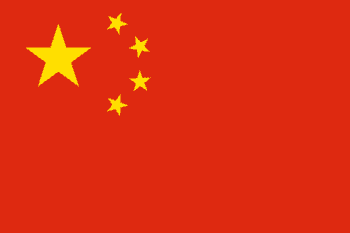Chinese Translation
Because of the expanding importance of the Chinese language in global commerce and communication, it is a highly sought-after service. Because the language and culture are unique and complicated, accurate and culturally acceptable translations are vital for efficient communication with the Chinese. Mandarin translation necessitates a thorough knowledge of the language's structure, syntax, and idiomatic idioms, as well as a comprehension of the cultural environment in which the language is employed. The online Chinese translator on the page can help you deliver your message clearly and effectively without spending a penny.
Common Expressions in Mandarin to English
Our desktop page features a comprehensive list of commonly used phrases and sentences tailored to your daily routine. From basic expressions to making friends, time expressions, shopping, movie, reservation, appointment, business, phone, restaurant, asking directions, and airport-related conversations, we have got you covered. You can easily access these translations and use them at any time, anywhere, to facilitate effective communication in these situations. So, go ahead and make use of them whenever you need to!
Looking for a native Chinese translator for English?
If so, you have come to the right place. It offers online translation services for both informal and professional documents. It is a time and cost-efficient way to quickly understand the main idea of the text. Additionally, it is an excellent resource for language learners, as it provides a chance to listen to texts in their native accents. Using our webpage is straightforward, even for novice users, requiring only one attempt with no hassle.
How to translate Chinese to English?
The free translation tool can be used by anyone, even those who are not familiar with computers. This requires input of Chinese text in the input box and then clicking the 'translate' button. Immediately, it will do the needful that will suffice for casual needs. For the reverse language pairing, the user can input text in Chinese and change the target language to English. Moreover, it is possible to listen to texts with local accents and download their audios as long as they are in fair usage limits.
Is it appropriate to use translations on formal documents?
Although this Chinese to English translator is totally free to use, it is not suitable for professional needs as it solely relies on machine translation. While it outperforms its competitors in terms of accuracy, it is important to note that a computer cannot replace a human professional. However, it can be a valuable aid if you possess some knowledge of the languages involved. For professional and accurate translation, it is recommended to hire a human translator who is a native speaker of both languages and has expertise in the subject matter.
Do you provide professional Mandarin to English translation?
Yes, we do that thanks to our highly skilled native translators in many parts of the world and ensure that all projects are completed promptly without compromising on quality. Our quality control process involves thorough proofreading and editing to ensure that the final product is free of errors and meets the highest standards of quality. We are committed to providing our clients with the best possible service and guarantee that they will be satisfied with the end result.
Chinese Language

It is an umbrella term for a variety of languages from the Sino-Tibetan group of languages. Almost 1.2 billion people all over the world speak the language. The language consists of between 7 and 13 regional groups of languages that are quite different from each other. Of these, the largest in terms of native speakers is Mandarin with approximately 960 million speakers. The others in the list with significant numbers speaking the language are Wu (with 80 million speakers), Min (70 million), and Yue (60 million). Speakers of these languages do not comprehend each other since the languages are totally different from each other. To standardise the diversity in languages and foster comprehension, written language has become the way of communication among speakers of different languages that fall in the Chinese category.
Standard Chinese based on the Beijing dialect is the official language of China and Taiwan. It is also one of the four official languages of Singapore. Cantonese is another Chinese language that is the official language of Hong Kong and Macau. Consequently, there has been a growing necessity for Chinese translation to English.
It is probably the oldest written language in the world. As a result, professional and informal needs to translate from Mandarin to English and vice versa are always at a high level. The first written records of Chinese language inscriptions were found in turtle shells dating back to 3000 years ago. There is no Chinese alphabet as such. The language uses characters instead. A dictionary A Dictionary of National Pronunciation was brought out in 1919 that presented a hybrid pronunciation of words that did not match any existing Chinese dialect so as to unify Chinese speakers. Other dictionaries modifying it further were brought out in the next few decades too. Finally, Standard Chinese with the Beijing dialect as the base was chosen as the lingua franca for people of different regions speaking different dialects to communicate with each other effectively.
Chinese is a tonal language with approximately 24 consonants, 6 vowels (and diphthongs), and four tones. The latter two are equally important in the language. The writing system is based on logograms, like the Egyptian hieroglyphics and Japanese kanji. The system has been in use for thousands of years with hardly any modification. These written characters do not convey a concept but a sound. The sounds are combined to create a word. In the olden times, the characters were read from top to bottom and right to left. However, now they are mostly read from left to right.
Copyright © 2013-2024 All Rights Reserved